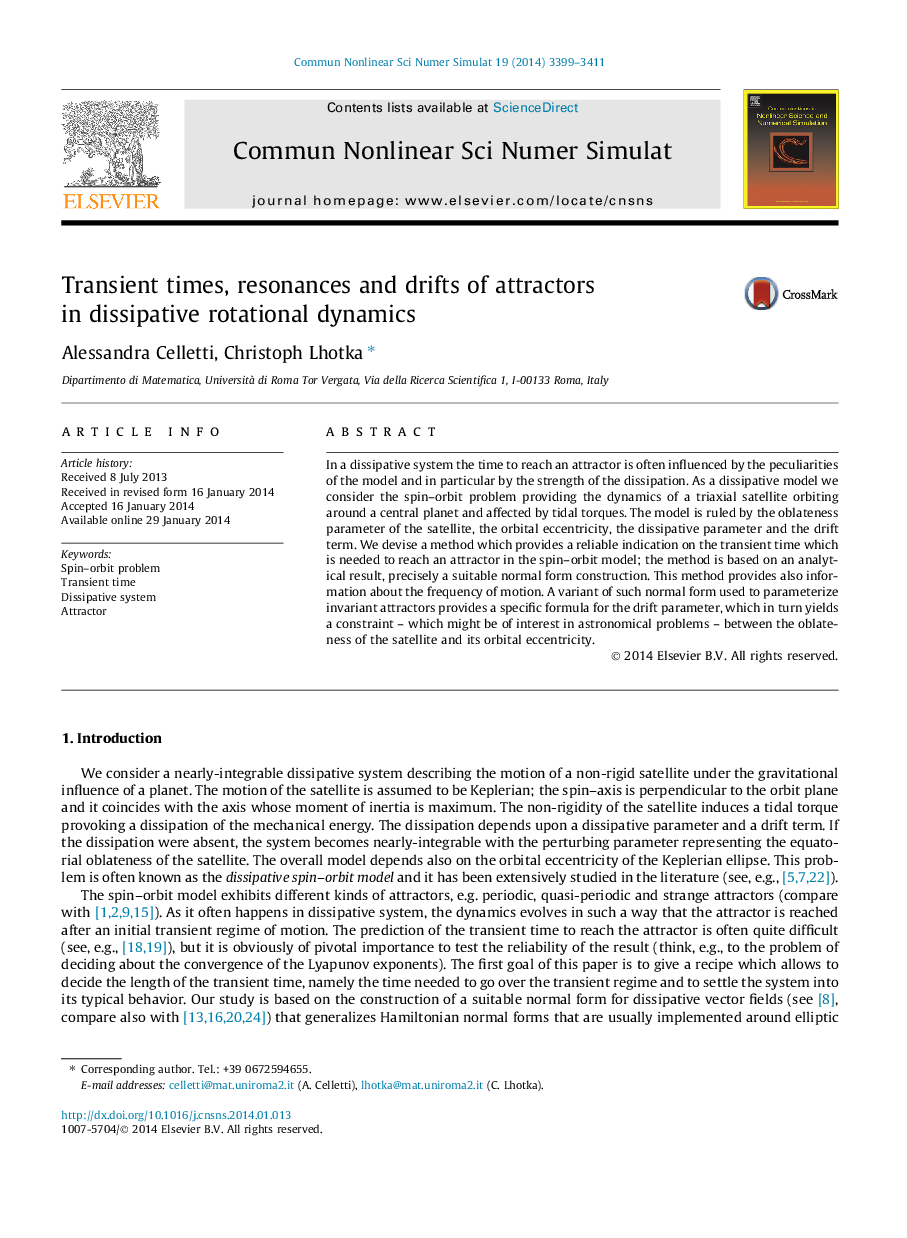| کد مقاله | کد نشریه | سال انتشار | مقاله انگلیسی | نسخه تمام متن |
|---|---|---|---|---|
| 759050 | 896461 | 2014 | 13 صفحه PDF | دانلود رایگان |
• We devise a numerical method to evaluate the transient time to reach attractors in dissipative systems.
• We implement a suitable normal form for dissipative dynamical systems that are close to integrable to the case of the spin–orbit problem.
• We develop the parametrization of KAM tori in the dissipative spin–orbit problem in Celestial Mechanics.
• We derive a simple relationship between the eccentricity and shape parameters in the spin–orbit problem.
In a dissipative system the time to reach an attractor is often influenced by the peculiarities of the model and in particular by the strength of the dissipation. As a dissipative model we consider the spin–orbit problem providing the dynamics of a triaxial satellite orbiting around a central planet and affected by tidal torques. The model is ruled by the oblateness parameter of the satellite, the orbital eccentricity, the dissipative parameter and the drift term. We devise a method which provides a reliable indication on the transient time which is needed to reach an attractor in the spin–orbit model; the method is based on an analytical result, precisely a suitable normal form construction. This method provides also information about the frequency of motion. A variant of such normal form used to parameterize invariant attractors provides a specific formula for the drift parameter, which in turn yields a constraint – which might be of interest in astronomical problems – between the oblateness of the satellite and its orbital eccentricity.
Journal: Communications in Nonlinear Science and Numerical Simulation - Volume 19, Issue 9, September 2014, Pages 3399–3411
